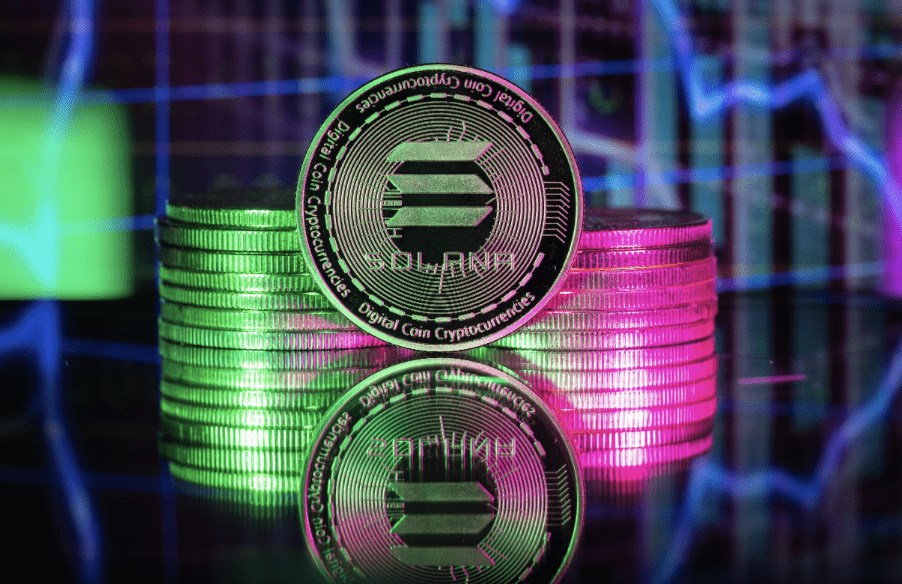Bitcoin experienced a rollercoaster ride on April 10 as the U.S. Consumer Price Index (CPI) data for March was released. The CPI, which measures the average change in prices paid by urban consumers for goods and services, came in at 3.5% year-on-year, slightly above the expected 3.4% and the previous month’s 3.2%.
TLDR
- Bitcoin price rebounded to $69,000 on April 10 after initially dipping to local lows of $67,482 following the release of the U.S. Consumer Price Index (CPI) data for March.
- The CPI came in slightly above expectations at 3.5% year-on-year, causing concerns about the Fed’s rate cut trajectory and sparking a brief dip in Bitcoin’s price.
- Whale buyers on Binance took advantage of the dip to accumulate more Bitcoin, helping the price recover to around $69,100.
- The two largest U.S. spot Bitcoin ETFs from BlackRock and Fidelity Investments saw modest inflows on April 9, continuing their unbroken streak of net inflows.
- Despite the initial dip, some analysts believe that the higher-than-expected CPI numbers might be favorable for Bitcoin in the long term,
The higher-than-anticipated inflation numbers sparked concerns among investors about the Federal Reserve’s rate cut trajectory. The data suggested that interest rates might remain higher for longer than previously expected, as the Fed’s target inflation rate of 2% remains elusive. This initially caused a dip in Bitcoin’s price, which fell to local lows of $67,482 on the Bitstamp exchange.
 Bitcoin Price at Coingecko
Bitcoin Price at CoingeckoHowever, the dip proved to be short-lived, as whale buyers on the Binance exchange seized the opportunity to accumulate more Bitcoin at a discounted price. Data from trading resource Material Indicators revealed that “purple whales” bought the dip, helping to propel the price back up to around $69,100, close to its daily opening level.
#FireCharts binned CVD shows that purple whales bought the #BTC dip.
Did you?
Stop Trading Blind. Get FireCharts Now! https://t.co/z8VpL3p88E pic.twitter.com/Mf5RH7plzw
— Material Indicators (@MI_Algos) April 10, 2024
The recovery in Bitcoin’s price was further supported by the continued inflows into the two largest U.S. spot Bitcoin exchange-traded funds (ETFs) from BlackRock and Fidelity Investments. These ETFs saw modest inflows on April 9, maintaining their unbroken streak of net inflows and demonstrating ongoing institutional interest in the cryptocurrency.
Despite the initial dip, some analysts believe that the higher-than-expected CPI numbers might actually be favorable for Bitcoin in the long term. Darren Franceschini, co-founder of Fideum, argues that Bitcoin’s limited supply and reputation as a hedge against inflation make it an attractive option for investors navigating the uncertainties of rising prices.
The upcoming Bitcoin halving event, which is expected to occur in May 2024, is seen as a potential catalyst for increased interest and speculation in the cryptocurrency. The halving, which occurs approximately every four years, reduces the amount of new Bitcoin entering circulation by half, thus increasing its scarcity and potentially driving up its price.
As Bitcoin continues to trade within a tight price range between its previous all-time high of $69,000 and resistance at $71,300, some traders, such as Rekt Capital, believe that there may only be a few “bargain-buying opportunities” left before the cryptocurrency breaks through its resistance and enters price discovery territory.
There are only two bargain-buying opportunities left for Bitcoin before price takes-out into Price Discovery
There's the Pre-Halving Retrace (dark blue circle)
And then there's the Re-Accumulation phase (red)
Bitcoin has already experienced a Pre-Halving Retrace of -18%… pic.twitter.com/OBkdTyMFr8
— Rekt Capital (@rektcapital) April 8, 2024
The resilience of Bitcoin’s price in the face of the higher-than-expected CPI numbers demonstrates the growing maturity and stability of the cryptocurrency market.
As more institutional investors and mainstream adoption continue to drive demand for Bitcoin, its ability to weather short-term volatility and macroeconomic uncertainties is likely to improve.
As the global economic landscape continues to evolve and central banks grapple with the challenges of inflation and monetary policy, Bitcoin’s role as a hedge against inflation and a store of value is likely to remain a topic of intense interest and debate.
The cryptocurrency’s performance in the coming months, particularly in the lead-up to and aftermath of the halving event, will be closely watched by investors and analysts alike.
The post Inflation Hedge? Bitcoin Bounces Back Above $70k After US CPI Numbers Exceed Expectations appeared first on Blockonomi.

 1 month ago
19
1 month ago
19







.png)

 English (US) ·
English (US) ·